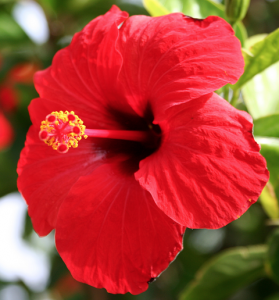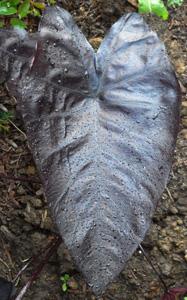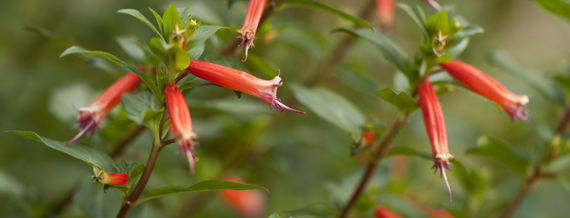Instant Color
Posted in Around the Garden on June 17 2014, by Sonia Uyterhoeven
Sonia Uyterhoeven is the NYBG’s Gardener for Public Education.

When you come to visit the Garden, more often than not you’re getting a view of the final product. Only seldom do our guests have the unexpected privilege of seeing all of our work in progress.
You may have come for a visit in the spring or the fall and seen us ripping out beds of bulbs or annuals, replacing them with other seasonal displays. We’re busy making what I call a “tidy mess”—or sometimes, depending on the personalities at play, “controlled chaos.” Everything gets ripped out. Perennials are given a new home, spent annuals dumped in the back of a Toro (our little, red, environmentally-friendly electric carts) and taken away to the compost heap. The bed is then raked smooth, fertilized, and its edges tidied in preparation for the new planting.
Carts of annuals and tender perennials are brought down to the work area, looking like nursery on wheels. A discussion then ensues on the placement and the number of plants available for each area. The bed is measured and divided into quadrants, the annuals are spaced, and each plant placed in the bed.
While annuals in themselves lend to instant color, I’m reminded of the importance of repeating like colors or “color echoes” in the garden, not only for the sake of design unity but to create impact. One of our trial beds in the Home Gardening Center features fiery colors of orange and red. The reds are offset by burgundy and black. The darker shades make the hotter colors burn and sizzle.

The ends of the beds are adorned with a relatively new selection of elephant’s ear called Colocasia esculenta ‘Electric Blue Gecko’. While the name may be reminiscent of pop bands from the 1970s, it’s certainly apt. The plant was hybridized by breeder Brian Williams of Brian’s Tropicals in Louisville, Kentucky. This selection is named after the gecko because its color morphs, changing like a lizard from the deepest black to purple and even metallic blue depending on the light. It will grow 3 – 4 feet during the season, creating a bold statement in your border.
Competing with the elephant ears for stature are five large, tropical hibiscus that extend the length of the bed. These specimens are densely covered with medium green foliage and deep red flowers. I believe the variety is called Hibiscus rosa-sinensis ‘Brilliant’. When we brought them down for planting, they were nice, full plants with plenty of buds and a few open flowers. They instantly added structure to the bed. But only after we planted Coleus ‘Sedona’ at their feed did they truly come alive.
The coleus, Solenostemon scutellarioides ‘Sedona’, will instantly wake you up. It is a fiery combination of rusty orange, rosy pink, and flame red, with hints of gold and burgundy. The bright reds in the coleus make the flowers on the hibiscus glisten. They looked nice alone, as well, but the combination makes each plant look magnificent. They complement each other perfectly; the rowdy coleus is calmed by the large hibiscus, while the hibiscus is energized in such a way that it is given a new lease on life.
Tucked in between the hibiscus is the tropical salvia, Salvia ‘Indigo Spires’. While it is still in its nascent early season form, it shows promise of what it will soon become—a collection of tall, weaving spires in deep purple that dance above handsome green foliage. Its flowers will bring out the multiple hues in the ‘Electric Blue Gecko’.
The bed is completed with a hummingbird favorite called Cuphea ‘David Verity’. This low-maintenance annual requires little care, flowers all summer long, and is often referred to as the cigar plant because of its tubular orange flowers. Their golden tips make them look like embers at the end of a burning Cohiba. The cigar plant has an airy texture to it that complements the broad, bold foliage of the coleus and the neighboring elephant ears.

While there are many requirements for a successful design, such as height, texture, and form, good color combinations can steal the show. In this design, color is found not only in the flowers, but also the foliage, creating a strong and instantaneous impression. It was a real joy watching the assorted annuals come to life as they intermingled with each other in this bed. Come for a visit and find your own favorite plant pairings.
Hibiscus image courtesy of Wikimedia Commons
Colocasia image courtesy of Plantworks Nursery

